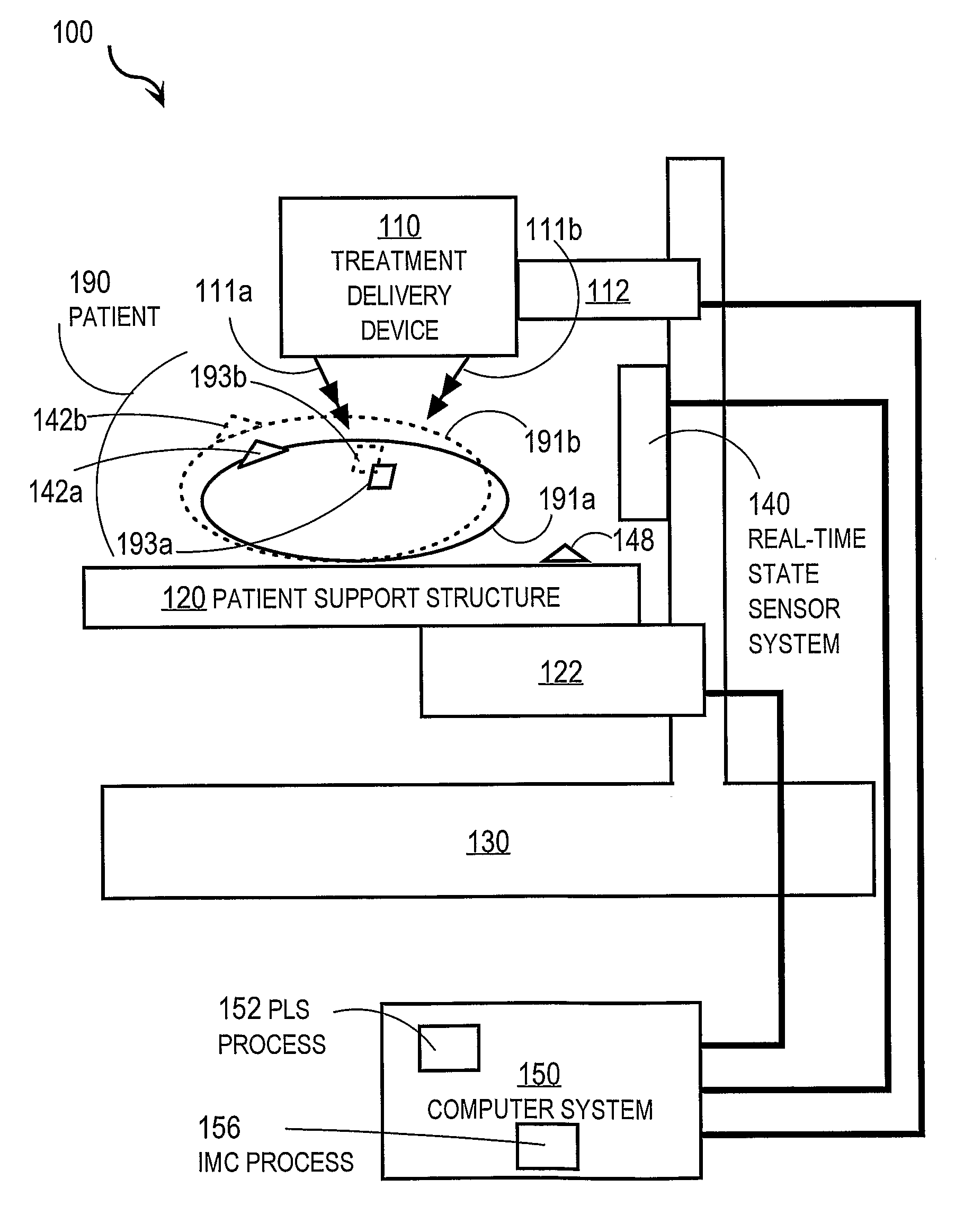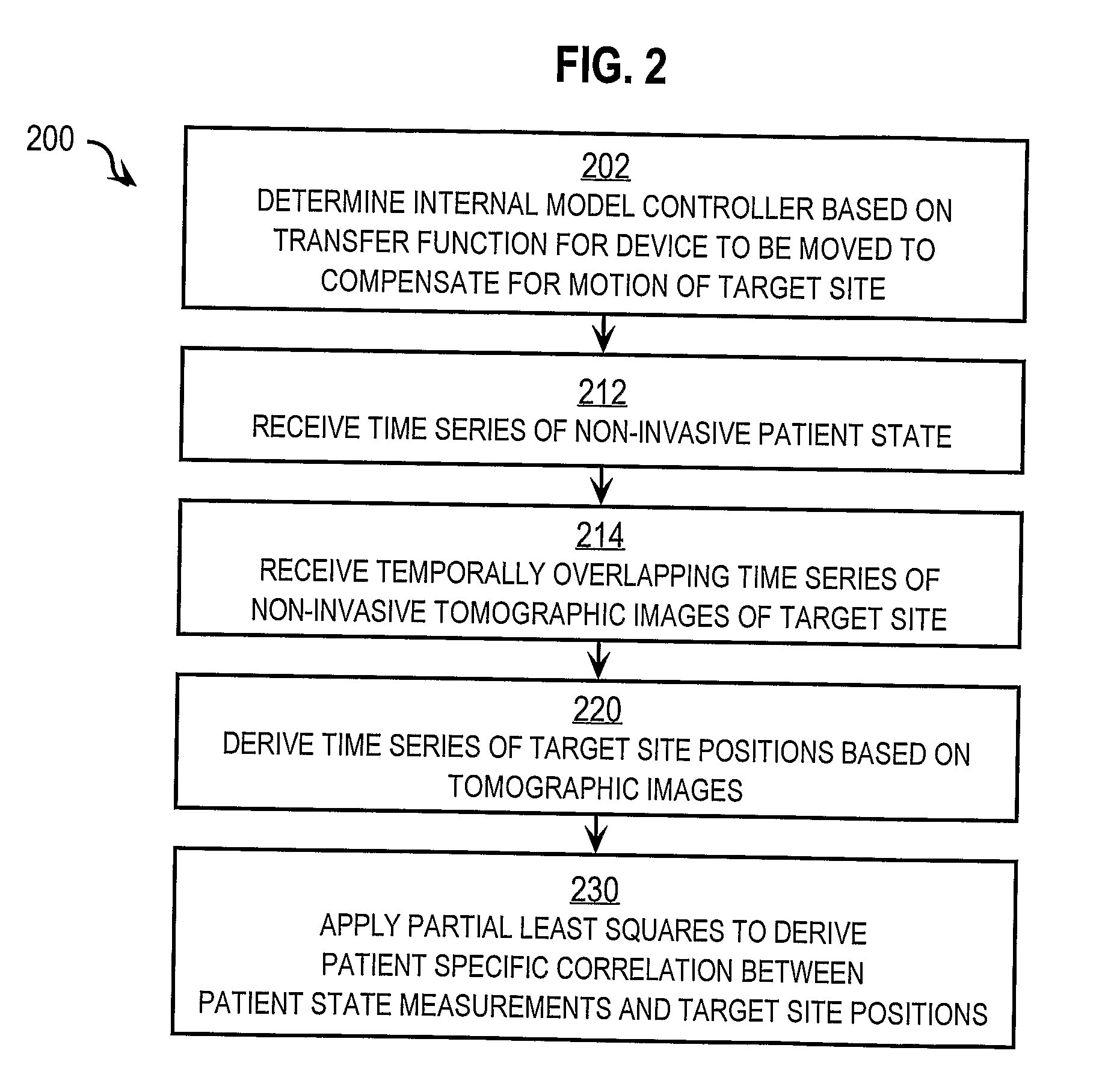Techniques For Compensating Movement of a Treatment Target in a Patient
a technology for treating target and patient, applied in the field of moving a support structure or treatment delivery device, can solve the problems of tumors in the thoracic and abdominal regions that are susceptible to motion, tumors receiving less than the desired dose, and possible complications, and achieve the effect of improving the delivery of treatmen
- Summary
- Abstract
- Description
- Claims
- Application Information
AI Technical Summary
Benefits of technology
Problems solved by technology
Method used
Image
Examples
Embodiment Construction
[0002]This invention was made in part with Government support under Contract No. DMI 03-65557 awarded by the National Science Foundation. The Government has certain rights in the invention.
BACKGROUND OF THE INVENTION
[0003]1. Field of the Invention
[0004]The present invention relates to treatment of tissues in a living organism, and in particular to moving a support structure or treatment delivery device, or both, to compensate for tissue movement relative to the treatment delivery device caused by biological activity of the organism, such as respiration, during treatment delivery, such a during delivery of a dose of radiation.
[0005]2. Description of the Related Art
[0006]Tumors in the thoracic and abdominal regions are susceptible to motion during normal respiration. Treating these tumors with, for example, a radiation beam or zone must take into account this moving target. Uncorrected, this leads to at least part of the tumor receiving less than the desired dose while that part is ou...
PUM
 Login to View More
Login to View More Abstract
Description
Claims
Application Information
 Login to View More
Login to View More - R&D
- Intellectual Property
- Life Sciences
- Materials
- Tech Scout
- Unparalleled Data Quality
- Higher Quality Content
- 60% Fewer Hallucinations
Browse by: Latest US Patents, China's latest patents, Technical Efficacy Thesaurus, Application Domain, Technology Topic, Popular Technical Reports.
© 2025 PatSnap. All rights reserved.Legal|Privacy policy|Modern Slavery Act Transparency Statement|Sitemap|About US| Contact US: help@patsnap.com



